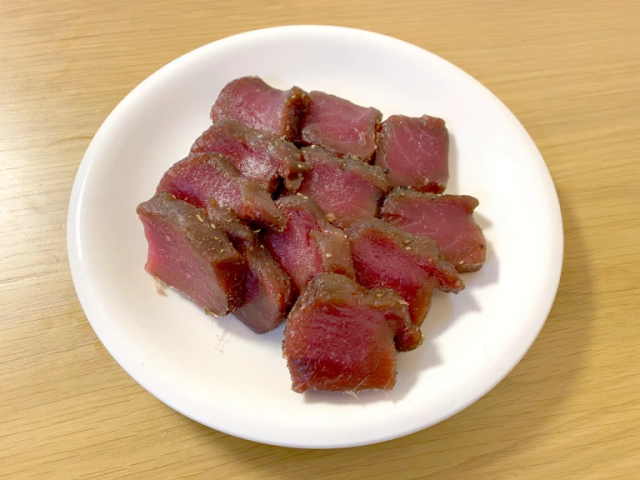
A whole new way to make maguro, and other kinds of fish, delicious without cooking them.
On our last trip to the grocery store, we came back with a nice block of tuna, or maguro as it’s called in Japanese. Ordinarily when you’ve got a cut of high-grade fish in Japan, the big decision is whether you want to make sashimi (sliced raw fish) or sushi (by putting the slices on vinegared rice), but this time we decided on a third option.
It was time to make some sashimi ham.
While we’ve got some creative cooking minds on staff (witness our previous recipes for green tea rice cooker pancakes and tempura fried rice), this time around the idea comes from a friend of our Japanese-language reporter P.K. Sanjun. P.K.’s friend is a serious fishing fan, and in addition to hitting local lakes early in the morning before going to work he sometimes spends his weekends on the high seas fishing for tuna, and after catching enough of it to experiment with, he came up with this super-easy recipe for dry-cured maguro ham.
Looking at our prep photos, you might also think you’ll need saran wrap, but what’s really required is something a little more specialized. That’s actually a roll of dehydrator sheets, and though P.K.’s buddy can get them at his local supermarket, we had to order ours online, getting a pack of 15 sheets for 1,000 yen (US$9.35) on Amazon
▼ Our roll of Pichit Sheet-brand dehydrator sheets
Prepping the maguro ham only takes a few seconds of work. First, take the tuna out of its pack and pat it with a paper towel to remove its surface moisture. Next, sprinkle on a generous amount of whatever your favorite kind of allspice is.
▼ We opted for Jane’s Krazy Mixed-up Salt, which is pretty easy to find in Japan.
Next, grab a dehydrator sheet and wrap the maguro inside of it. The material feels a little like cushiony plastic wrap, but its specially designed to dry whatever is inside, which is why they’re also called himono (“dried fish”) sheets in Japanese.
And that’s really all the work you need to do. Granted, you can’t eat the ham just yet, but the only remaining step is to place the wrapped block of maguro in your fridge and let it chill for two days.
▼ The beginning of our 48 hours of anticipation
Resisting the urge to take a big bite out of that block of sashimi every time we needed to get something else out of the refrigerator was a difficult challenge. At times our resolve began to waver, but we managed to hold out for the two days needed for the dry-curing process to finish, upon which we were rewarded for our display of willpower.
Unwrapping the maguro, we noticed that its outer edge had taken on a brownish hue during the curing process. Slicing off a piece, though, revealed that beneath the surface it was still ruby-red, and the contrast between the two colors made the fish all the more mouthwatering to look at.
As for the eating experience, it was everything we could have hoped for. The maguro ham is flavorful and tender, and the salty seasoning makes it particularly refreshing at the end of a sweaty summer day. P.K.’s friend even told him that the same steps can be used to make ham out of other types of sashimi, like sea bream or whitefish, and we can’t wait to try them for ourselves, especially with how easy the process is.
Photos ©SoraNews24
● Want to hear about SoraNews24’s latest articles as soon as they’re published? Follow us on Facebook and Twitter!
[ Read in Japanese ]

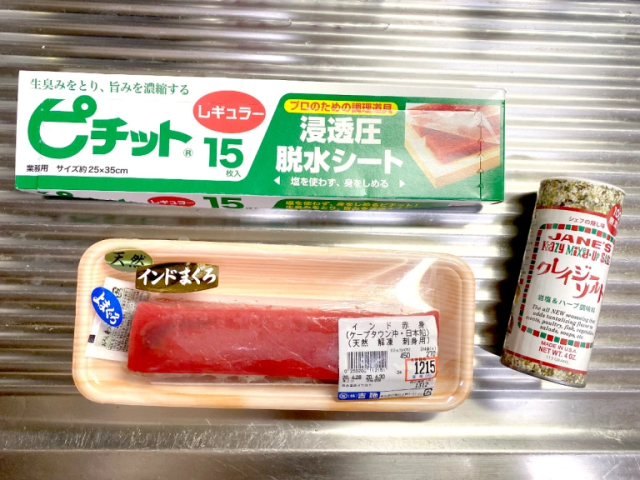
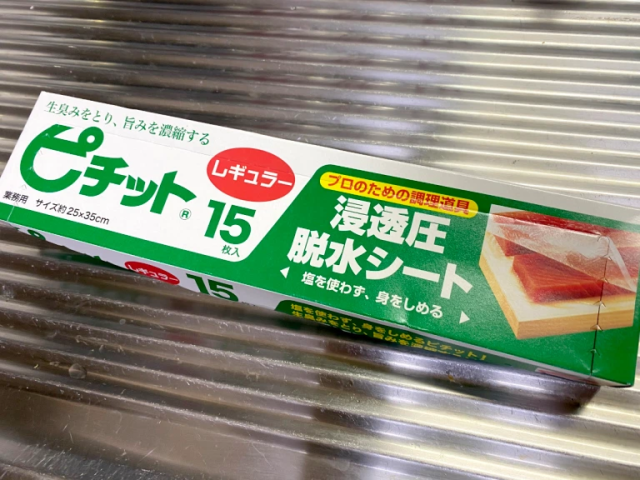
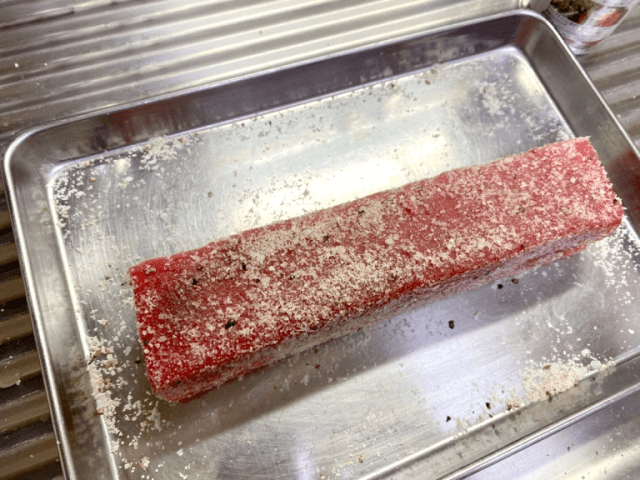
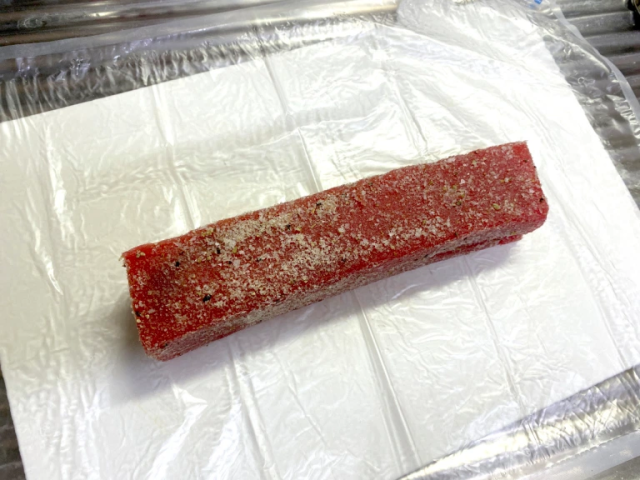
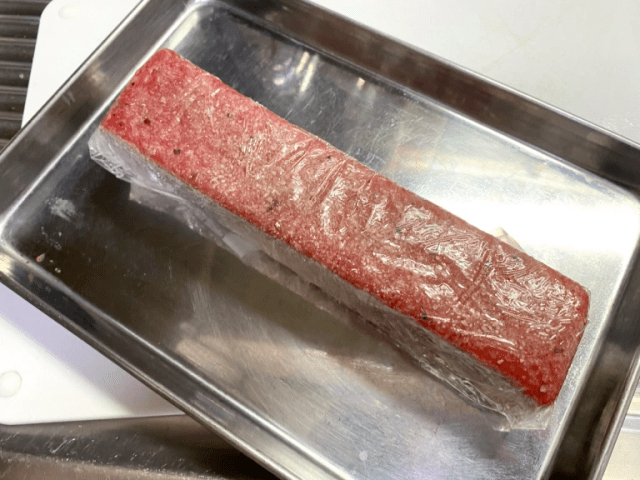

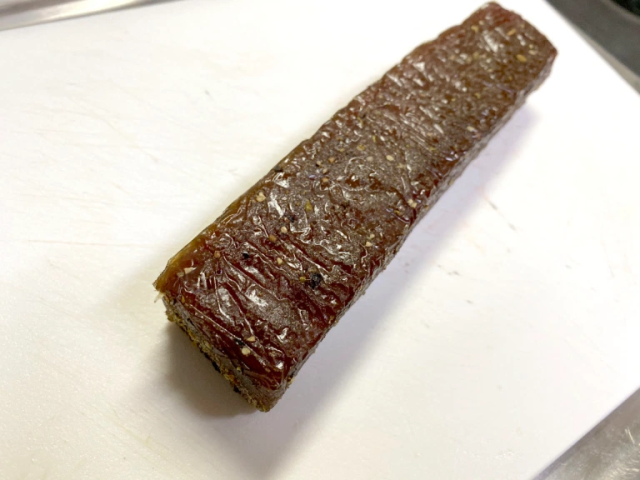
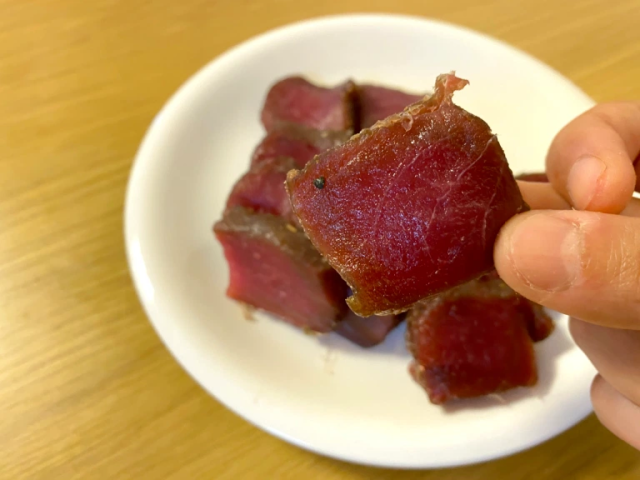
 How to choose a great block of sashimi-grade tuna – 66-year maguro master shares his protips
How to choose a great block of sashimi-grade tuna – 66-year maguro master shares his protips Hot sandwich maker becomes hot dessert maker with super-easy choco banana pie recipe【SoraKitchen】
Hot sandwich maker becomes hot dessert maker with super-easy choco banana pie recipe【SoraKitchen】 There’s only one place in Japan where this kind of sushi isn’t red, but why?
There’s only one place in Japan where this kind of sushi isn’t red, but why? Japan’s biggest ham company is making “tuna” that contains neither ham nor fish
Japan’s biggest ham company is making “tuna” that contains neither ham nor fish Oh shiitake! How to grow your own with Japan’s super-easy mushroom cultivation kit【Photos】
Oh shiitake! How to grow your own with Japan’s super-easy mushroom cultivation kit【Photos】 McDonald’s new Happy Meals offer up cute and practical Sanrio lifestyle goods
McDonald’s new Happy Meals offer up cute and practical Sanrio lifestyle goods All-you-can-drink Starbucks and amazing views part of Tokyo’s new 170 meter-high sky lounge
All-you-can-drink Starbucks and amazing views part of Tokyo’s new 170 meter-high sky lounge Studio Ghibli glasses cases let anime characters keep an eye on your spectacles
Studio Ghibli glasses cases let anime characters keep an eye on your spectacles More foreign tourists than ever before in history visited Japan last month
More foreign tourists than ever before in history visited Japan last month Starbucks reopens at Shibuya Scramble Crossing with new look and design concept
Starbucks reopens at Shibuya Scramble Crossing with new look and design concept Beautiful Sailor Moon manhole cover coasters being given out for free by Tokyo tourist center
Beautiful Sailor Moon manhole cover coasters being given out for free by Tokyo tourist center The oldest tunnel in Japan is believed to be haunted, and strange things happen when we go there
The oldest tunnel in Japan is believed to be haunted, and strange things happen when we go there The best Japanese curry in Japan isn’t eaten at a restaurant
The best Japanese curry in Japan isn’t eaten at a restaurant Is the new Shinkansen Train Desk ticket worth it?
Is the new Shinkansen Train Desk ticket worth it? Mister Donut ready to make hojicha dreams come true in latest collab with Kyoto tea merchant
Mister Donut ready to make hojicha dreams come true in latest collab with Kyoto tea merchant Disney princesses get official manga makeovers for Manga Princess Cafe opening in Tokyo
Disney princesses get official manga makeovers for Manga Princess Cafe opening in Tokyo We try out “Chan Ramen”, an underground type of ramen popular in the ramen community
We try out “Chan Ramen”, an underground type of ramen popular in the ramen community Beautiful new Final Fantasy T-shirt collection on the way from Uniqlo【Photos】
Beautiful new Final Fantasy T-shirt collection on the way from Uniqlo【Photos】 Foreign English teachers in Japan pick their favorite Japanese-language phrases【Survey】
Foreign English teachers in Japan pick their favorite Japanese-language phrases【Survey】 There’s a park inside Japan where you can also see Japan inside the park
There’s a park inside Japan where you can also see Japan inside the park Japanese convenience store packs a whole bento into an onigiri rice ball
Japanese convenience store packs a whole bento into an onigiri rice ball Studio Ghibli releases Kiki’s Delivery Service chocolate cake pouches in Japan
Studio Ghibli releases Kiki’s Delivery Service chocolate cake pouches in Japan Japan’s bone-breaking and record-breaking roller coaster is permanently shutting down
Japan’s bone-breaking and record-breaking roller coaster is permanently shutting down New definition of “Japanese whiskey” goes into effect to prevent fakes from fooling overseas buyers
New definition of “Japanese whiskey” goes into effect to prevent fakes from fooling overseas buyers Foreign passenger shoves conductor on one of the last full runs for Japan’s Thunderbird train
Foreign passenger shoves conductor on one of the last full runs for Japan’s Thunderbird train Our Japanese reporter visits Costco in the U.S., finds super American and very Japanese things
Our Japanese reporter visits Costco in the U.S., finds super American and very Japanese things Kyoto bans tourists from geisha alleys in Gion, with fines for those who don’t follow rules
Kyoto bans tourists from geisha alleys in Gion, with fines for those who don’t follow rules Studio Ghibli unveils Mother’s Day gift set that captures the love in My Neighbour Totoro
Studio Ghibli unveils Mother’s Day gift set that captures the love in My Neighbour Totoro Domino’s Japan now sells…pizza ears?
Domino’s Japan now sells…pizza ears? New Japanese KitKat flavour stars Sanrio characters, including Hello Kitty
New Japanese KitKat flavour stars Sanrio characters, including Hello Kitty Sales of Japan’s most convenient train ticket/shopping payment cards suspended indefinitely
Sales of Japan’s most convenient train ticket/shopping payment cards suspended indefinitely Sold-out Studio Ghibli desktop humidifiers are back so Totoro can help you through the dry season
Sold-out Studio Ghibli desktop humidifiers are back so Totoro can help you through the dry season Japanese government to make first change to romanization spelling rules since the 1950s
Japanese government to make first change to romanization spelling rules since the 1950s Ghibli founders Toshio Suzuki and Hayao Miyazaki contribute to Japanese whisky Totoro label design
Ghibli founders Toshio Suzuki and Hayao Miyazaki contribute to Japanese whisky Totoro label design Doraemon found buried at sea as scene from 1993 anime becomes real life【Photos】
Doraemon found buried at sea as scene from 1993 anime becomes real life【Photos】 Tokyo’s most famous Starbucks is closed
Tokyo’s most famous Starbucks is closed One Piece characters’ nationalities revealed, but fans have mixed opinions
One Piece characters’ nationalities revealed, but fans have mixed opinions We asked a Uniqlo employee what four things we should buy and their suggestions didn’t disappoint
We asked a Uniqlo employee what four things we should buy and their suggestions didn’t disappoint Princesses, fruits, and blacksmiths: Study reveals the 30 most unusual family names in Japan
Princesses, fruits, and blacksmiths: Study reveals the 30 most unusual family names in Japan Studio Ghibli’s new desktop Howl’s Moving Castle will take your stationery on an adventure
Studio Ghibli’s new desktop Howl’s Moving Castle will take your stationery on an adventure Which Japanese conveyor belt sushi chain has the best tuna sushi?【Taste test】
Which Japanese conveyor belt sushi chain has the best tuna sushi?【Taste test】 Who’s got the best, cheapest one-person sushi delivery in downtown Tokyo? Mr. Sato investigates!
Who’s got the best, cheapest one-person sushi delivery in downtown Tokyo? Mr. Sato investigates! Häagen-Dazs Japan’s Yuzu Green Tea Float — How to make the super-easy matcha summer dessert drink
Häagen-Dazs Japan’s Yuzu Green Tea Float — How to make the super-easy matcha summer dessert drink Upcoming party in Shibuya combines house music with cutting open a tuna, girls get in free
Upcoming party in Shibuya combines house music with cutting open a tuna, girls get in free Try a super-easy summer cold remedy with this natural Honey Daikon Cough Syrup recipe
Try a super-easy summer cold remedy with this natural Honey Daikon Cough Syrup recipe Semi-secret Shinjuku sushi lunch is a great way to get your fish fix for cheap in central Tokyo
Semi-secret Shinjuku sushi lunch is a great way to get your fish fix for cheap in central Tokyo Rare ghost-white tuna caught off Bali — we go to see it on display in Shibuya!
Rare ghost-white tuna caught off Bali — we go to see it on display in Shibuya! 25 different Japanese convenience store sandwiches – What’s inside them?【Photos】
25 different Japanese convenience store sandwiches – What’s inside them?【Photos】 Japanese people list their top ten fish, and tuna isn’t number one
Japanese people list their top ten fish, and tuna isn’t number one Beef and sashimi in the same rice bowl: Brilliance or blasphemy? We find out【Taste test】
Beef and sashimi in the same rice bowl: Brilliance or blasphemy? We find out【Taste test】 Yaizu: Japan’s best sushi market destination even most foodies in Japan have never heard of
Yaizu: Japan’s best sushi market destination even most foodies in Japan have never heard of Sailor Moon chocolates look amazing and are super-easy to make yourself with awesome mold
Sailor Moon chocolates look amazing and are super-easy to make yourself with awesome mold Japan super budget dining – What’s the best way to spend 1,000 yen at sushi restaurant Sushiro?
Japan super budget dining – What’s the best way to spend 1,000 yen at sushi restaurant Sushiro? Tokyo restaurant says its lunch set has too much sashimi, as if such a thing were possible
Tokyo restaurant says its lunch set has too much sashimi, as if such a thing were possible We make anime food from Studio Ghibli movie Laputa: Castle in the Sky
We make anime food from Studio Ghibli movie Laputa: Castle in the Sky
Leave a Reply